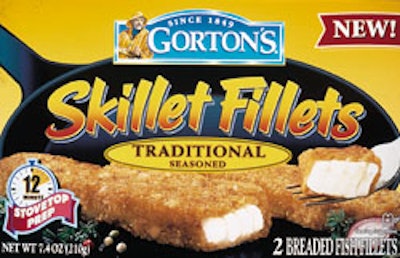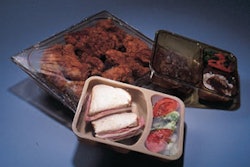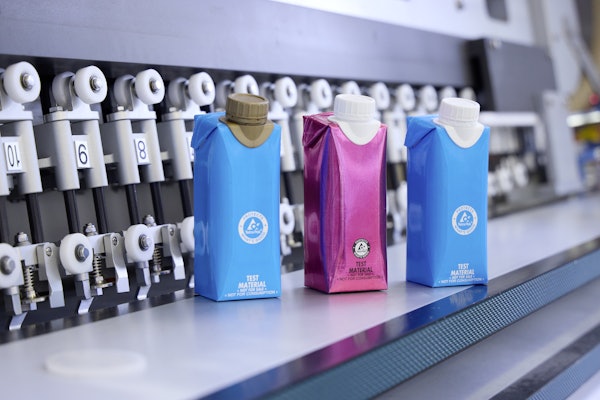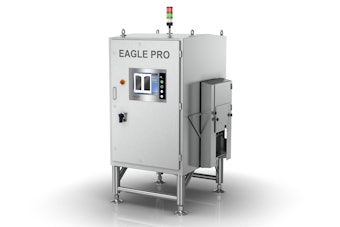
After three years of experience with mandated Hazard Analysis Critical Control Points programs, both consumer and industry groups are beginning to grumble loudly, and for different reasons. Consumer groups think the Food & Drug Administration is asleep at the rudder. On the other hand, meat groups have a beef with the U.S. Dept. of Agriculture’s use of microbiological standards for salmonella. Against that backdrop of discontent, both agencies say they may be tightening their HACCP standards this year. Having recently taken its first enforcement action against a seafood processor for HACCP insufficiencies, the FDA shows signs of responding to political pressure. At hearings in the Senate Agriculture Committee last September, Caroline Smith-DeWaal, director of food safety for the Center for Science in the Public Interest, reeled off FDA’s own statistics that showed, for example, that only 24% of seafood plants had implemented a HACCP plan that had gained FDA approval by 1999. She also cited FDA numbers that showed more than 60% of smoked, vacuum-packed and cooked, ready-to-eat fish product marketers lacked adequate pathogen controls in their HACCP plans. “Seafood HACCP is a failure,” says DeWaal. In response to complaints like that, Sens. Richard Lugar (R-IN) and Tom Harkin (D-IA), the chairman and ranking Democrat on the Senate Agriculture Committee, asked the General Accounting Office to do a study of FDA administration of the seafood HACCP program. Their request alluded to “a seemingly low compliance rate among seafood processors.” Larry Dyckman, the GAO supervisor for the upcoming report, says it should land on Congress’s desk at about the time representatives are returning to Washington in late January.
Political heat The FDA is trying to get out in front of any potential political pressure. The agency recently filed its first seafood HACCP enforcement action, which resulted in the signing of a consent decree by a company the FDA refuses to name. The seafood HACCP program is so sensitive that neither Phil Spiller, the director of the office of seafood, nor his deputy, Don Kraemer, were willing to be interviewed for this report. Joseph Levitt, director of the Center for Food Safety and Applied Nutrition at the FDA, which houses the office of seafood, told the Senate Agriculture Committee in September, “Additional actions will be considered as inspectional findings are reported. We are also in the final stages of completing an evaluation of our seafood HACCP program.” Dane Bernard, vice president of the National Food Processors Assn., accuses DeWaal and other consumer group leaders of “trying to capitalize on the politics of the moment.” Bernard believes that the FDA’s up-until-now ‘go slow’ HACCP enforcement approach has been warranted given the complexity of the Hazards and Controls Guidance. That document is far more detailed than any other that meat processors have to contend with, for example. But now, agrees Bernard, “It is time to go to more drastic measures for those companies who don’t get it.” Any clampdown would catch the attention of seafood packagers. Lamont Rumbers, vice president of quality assurance for Aurora Foods, St. Louis, MO, says the FDA has audited his company’s HACCP program at its two main processing plants in Yuba City, CA, and Erie, PA. Both plants produce Van de Kamp’s and Mrs. Paul’s frozen fish products.
Labeling of allergens Labeling, for example, is a “critical control point,” particularly with regard to the presence of allergens in a product. Take whey protein for example. A company like Aurora must make sure that its HACCP plan includes verification of labeling accuracy so that a product that has an allergen makes that declaration on the package for those with allergies to see. Companies that package a product containing an allergen on a packaging line prior to another non-allergen product being sent over that same line may have to, as part of an HACCP program, make sure the packaging conveyor belt is cleaned to remove the allergen. Gorton’s, Gloucester, MA, had a seafood HACCP program for 20 years prior to it becoming mandatory in December 1997. The FDA conducted two HACCP audits at Gorton’s facility in Gloucester, in 1998 and 1999. Donald Lynch, vice president of research and development at Gorton’s, says the company passed with flying colors. Lynch says packaging plays an important role in that company’s quality program. “All packaged products must go through metal detectors,” he says. “That is a critical control point for us.” The same is true for Aurora. The metal detectors monitor whether ferrous, non-ferrous metal or stainless steel pieces adhered to the package, or got into the product.

























